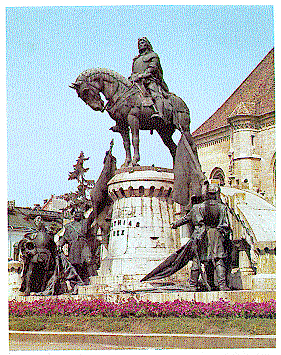
FOGARAS After the Hungarian Conquest of Transylvania in 896, Fogaras (Fagaras, Rumania today) became a Hungarian village. During the reign of Hungarian king Géza II (1141-1162) of the House of Árpád, Saxons from Germany were settled here. The first fortress of Fogaras was built around 1310. In 1464, Hungarian king Matthias (1458-1490), gave Fogaras, with its fortress to János Geréb, who became later the governor of Transylvania. The growing Saxon population gained authority over the town in 1472 and, by the end of the 16th century, 64 villages paid revenues to Fogaras, which, this way, became a 'little local empire'. The prime time of Fogaras arrived during the reign of Hungarian Gábor Bethlen (1613-1629), governor of Transylvania, when the town became an economic role model city in southern Transylvania. Gábor Bethlen completely rebuilt the fortress and, from now on, Fogaras was the Transylvanian Queen city, (equivalent to Veszprém in Hungary), the standard residence place for the wives of the Transylvanian governors. The most well-known of these queens was the orphan Kata Bethlen (1700-1759), whose grave is in front of the Reformed (i.e., Presbyterian) church of Fogaras. The church holds several precious relics of her life. Her bridal skirt, with the family coat of arms on it, is now the pulpit cover, and her bridal veil now covers the altar table. Both are made of yellow silk. The Mountains of Fogaras is in the southern part of Europe's largest chain-mountain, the Carpathian Mountains. Located close to the city of Fogaras, this mountain is not only a great ski resort but also home of very tough winters. This picture shows a sunny winter scene of the Mountains of Fogaras with its tall pine trees, so much snowed-in, that all we can see here is the tip of the trees sticking out of the snow. (Bottom left picture : Courtesy of Zoltán Farkas)



